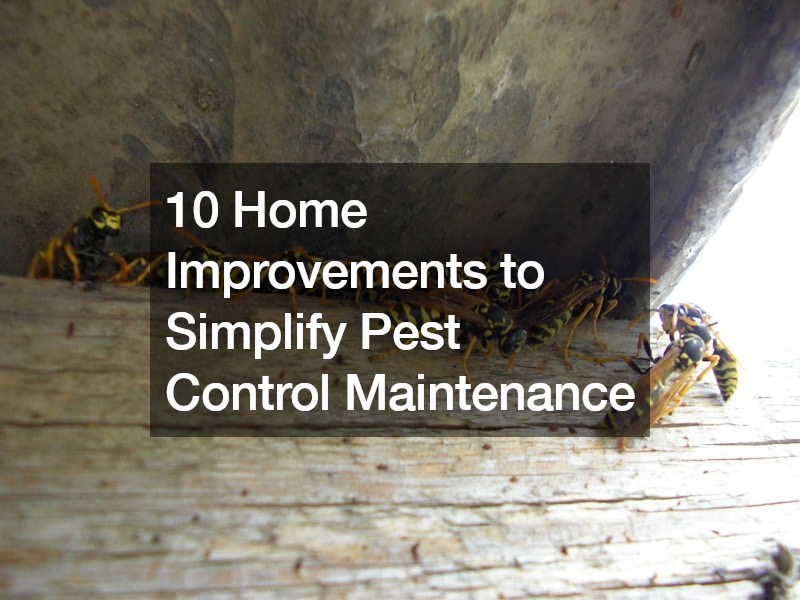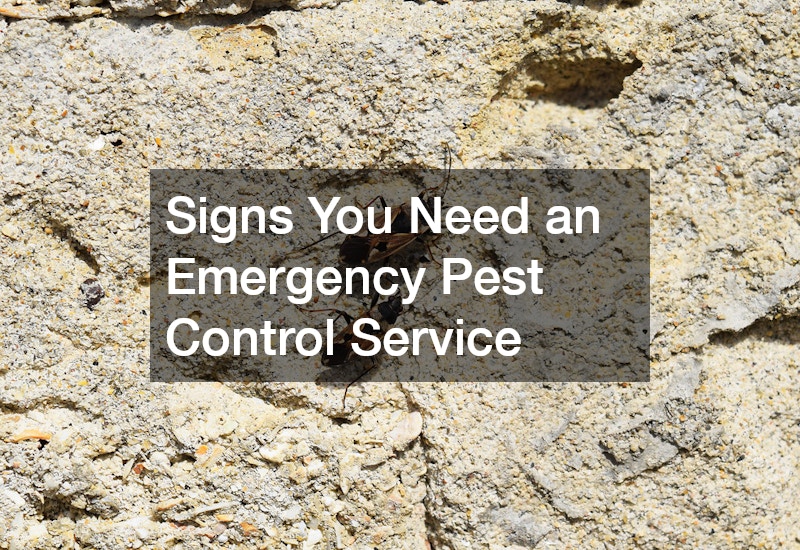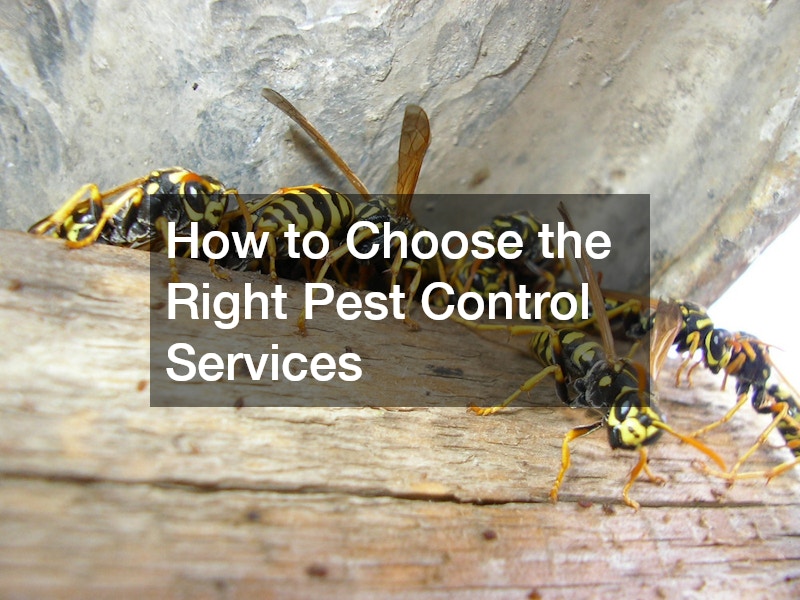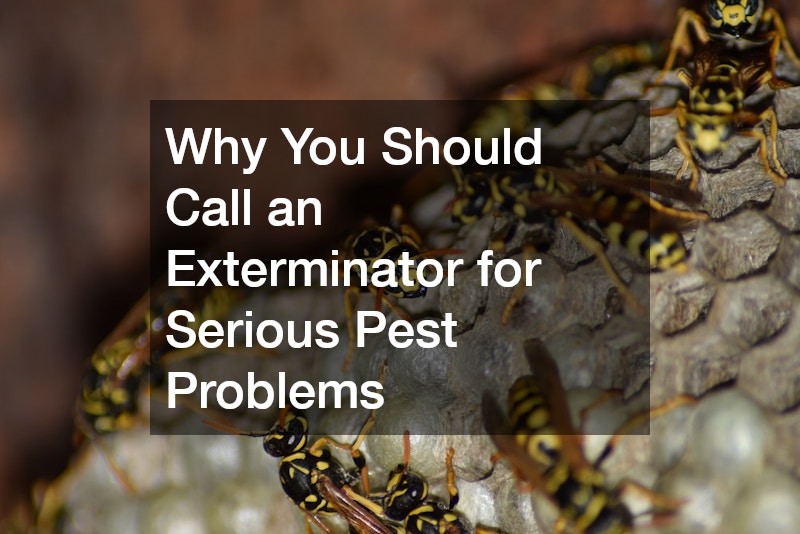Many homeowners struggle with pest control maintenance, but there are several home improvements that can make this task much simpler. In this article, we will explore 10 key strategies that homeowners can implement to effectively manage and prevent pests in their homes. By incorporating these improvements into your regular maintenance routine, you can create a healthier, pest-free living environment for you and your family.
Implementing these 10 home improvements can simplify pest control maintenance and create a healthier, pest-free living environment for you and your family. By keeping gutters clear, restoring and maintaining your deck, maintaining clean and dry spaces, implementing natural pest control methods, installing screens and meshes, fixing any plumbing issues, restoring and cleaning your roof, maintaining outdoor landscaping, keeping trees trimmed and healthy, and educating family members on pest prevention, you can create a more proactive and effective approach to pest control maintenance.
1. Keep Gutters Clear

One of the most important steps in pest control maintenance is to keep your gutters clear of debris. Clogged gutters can provide a perfect breeding ground for pests such as mosquitoes and rodents. To prevent this, consider hiring a professional gutter company to regularly clean and maintain your gutters. By ensuring that water can flow freely through your gutters, you can help stop pests from taking up residence in your home.
Regular gutter cleaning can also help prevent water damage to your home’s foundation and roof. By keeping your gutters clear, you can reduce the risk of leaks and water infiltration that can attract pests. In addition, maintaining clean gutters can improve the overall appearance and curb appeal of your home.
To further enhance pest control, consider installing gutter guards or screens. These devices can help prevent debris from clogging your gutters, reducing the need for frequent cleaning. By taking these simple steps to maintain your gutters, you can make pest control maintenance much easier and more effective.
2. Restore and Maintain Your Deck
Another important aspect of pest control maintenance is to restore and maintain your deck. Decks can provide hiding places for pests such as termites, ants, and rodents. To prevent infestations, consider hiring deck builders to repair any damage and apply sealant or stain to protect the wood. By maintaining your deck, you can prevent pests from using it as a point of entry into your home.
In addition to regular maintenance, consider implementing natural pest control methods on and around your deck. For example, you can plant pest-repelling herbs such as citronella or lavender in pots on your deck. These plants can help deter pests while adding beauty and fragrance to your outdoor space. By taking a proactive approach to deck maintenance and pest control, you can create a more enjoyable outdoor living environment.
Regularly inspecting your deck for signs of pests and damage is also key to effective pest control maintenance. Look for small holes, chew marks, or piles of sawdust, which may indicate the presence of pests such as termites or carpenter ants. By addressing any issues promptly, you can prevent troublesome infestations and protect your deck for years to come.
3. Maintain Clean and Dry Spaces
One of the simplest yet most effective ways to prevent pests is to maintain clean and dry spaces in and around your home. Pests such as cockroaches, ants, and rodents are attracted to food crumbs, water sources, and clutter. By keeping your home clean and free of debris, you can prevent pests from taking up residence.
To maintain clean and dry spaces, work with a basement contractor to address any moisture issues in your basement or crawl space. These areas are particularly prone to dampness, which can attract pests such as spiders and centipedes. By sealing cracks, installing a dehumidifier, and keeping these spaces clean, you can create a less hospitable environment for pests.
Regularly vacuuming carpets, wiping down countertops, and emptying trash cans can also help prevent pest infestations. By removing potential food sources and hiding places, you can make your home less attractive to pests. In addition, consider storing food in airtight containers and promptly fixing any plumbing leaks to prevent moisture buildup.
4. Implement Natural Pest Control Methods

When it comes to pest control maintenance, natural methods can be just as effective as chemical treatments. Many pest control services offer natural pest control options that are safe for your family and pets. By using these methods, you can prevent pests while minimizing your exposure to harmful chemicals.
One natural pest control method is to plant pest-repelling herbs and flowers in your garden. For example, planting marigolds can help deter aphids, mosquitoes, and other pests. You can also use essential oils such as peppermint, eucalyptus, or tea tree oil to create homemade pest sprays. These natural remedies can help repel pests without harming beneficial insects.
Another natural pest control method is to introduce predators or parasites that can help control pest populations. For example, releasing ladybugs in your garden can help control aphids, while nematodes can target flea larvae in your yard. By using these natural techniques, you can reduce the need for chemical pesticides and create a more balanced ecosystem in your home and garden.
5. Install Screens and Meshes
One of the most effective ways to prevent pests from entering your home is to install screens and meshes on windows, doors, and vents. These barriers can help prevent pests such as flies, mosquitoes, and rodents from gaining access to your home. Work with a window treatment company to install high-quality screens that are durable and tightly sealed.
In addition to windows and doors, consider installing screens on attic and crawl space vents to prevent pests from entering these areas. Regularly inspect these screens for tears or holes, and promptly repair any damage to maintain their effectiveness. By creating a physical barrier between pests and your home, you can reduce the likelihood of infestations.
To further enhance pest control, consider installing mesh covers on chimney openings and foundation vents. These areas are common entry points for pests such as bats, birds, and rodents. By covering these openings with mesh, you can prevent unwanted visitors from entering your home while still allowing for proper ventilation.
6. Fix Any Plumbing Issues
Another important aspect of pest control maintenance is to fix any plumbing issues in your home. Leaky faucets, clogged drains, and broken pipes can create moisture buildup and attract pests such as cockroaches, silverfish, and ants. Work with a plumbing company to promptly address any plumbing problems to prevent pests and prevent water damage.
Regularly inspecting your plumbing system for leaks, cracks, and clogs can help prevent pests from finding a water source in your home. Look for signs of water damage, such as mold growth, musty odors, and discolored walls or ceilings. By addressing these issues quickly, you can reduce the risk of pest infestations and protect your home from water damage.
In addition to fixing leaks and clogs, consider installing drain screens or traps to prevent pests from entering your home through drains. These devices can help catch debris and prevent pests from traveling through your plumbing system. By maintaining your plumbing system and addressing any issues promptly, you can create a less hospitable environment for pests.
7. Restore and Clean Your Roof

Your roof plays a crucial role in protecting your home from pests and the elements. Regular roof maintenance can help prevent leaks, water damage, and pest infestations. Work with roofing contractors to inspect your roof for damage, clean debris, and make any necessary repairs to prevent pests and enhance the longevity of your roof.
One important aspect of roof maintenance is to keep gutters clear of debris to prevent water buildup and attract pests. Clogged gutters can provide a breeding ground for mosquitoes, flies, and ants. By regularly cleaning your gutters and inspecting your roof for damage, you can reduce the risk of pest infestations and protect your home from water damage.
In addition to cleaning gutters, consider trimming overhanging tree branches that can provide access points for pests such as squirrels, raccoons, and birds. By maintaining a clear perimeter around your home and roof, you can reduce the likelihood of pest infestations and protect your home’s structural integrity. Regular roof maintenance can help prevent pests and ensure the long-term health of your home.
8. Maintain Outdoor Landscaping
Outdoor landscaping can have a significant impact on pest control maintenance. Overgrown vegetation, standing water, and clutter can provide hiding places and breeding grounds for pests. Work with a landscaping contractor to maintain a well-manicured yard that is free of debris and pests.
Regularly mowing your lawn, trimming bushes, and removing dead plants can help prevent pests from taking up residence in your yard. These simple landscaping tasks can also improve air circulation and sunlight exposure, reducing the risk of mold growth and pest infestations. By maintaining a tidy outdoor space, you can create a less hospitable environment for pests.
In addition to regular maintenance, consider planting pest-resistant plants and flowers in your garden. For example, lavender, rosemary, and marigolds are known for their pest-repelling properties. You can also use mulch and gravel to deter pests such as slugs and snails. By incorporating these landscaping strategies, you can minimize the risk of pest infestations and create a more attractive outdoor living environment.
9. Keep Trees Trimmed and Healthy
Trees can enhance the beauty and value of your home, but they can also attract pests if not properly maintained. Overgrown trees can provide nesting sites and food sources for pests such as birds, squirrels, and insects. Work with tree companies to trim branches, remove dead limbs, and promote the health of your trees to prevent pest infestations.
Regular tree trimming can also help improve air circulation and sunlight exposure in your yard, reducing the risk of mold growth and pest infestations. By maintaining healthy trees, you can create a more balanced ecosystem and deter pests from taking up residence. In addition, regular tree maintenance can enhance the curb appeal of your home and increase its value.
To further enhance pest control, consider planting trees and shrubs away from your home’s foundation to prevent pests from accessing your roof and attic. You can also use tree wraps and barriers to protect young trees from pests such as rodents and deer. By incorporating these tree care strategies into your regular maintenance routine, you can create a healthier, pest-free environment for you and your family.
10. Educate Family Members on Pest Prevention

Finally, educating your family members on pest prevention can help create a more proactive approach to pest control maintenance. Teach children and other household members about the importance of cleanliness, proper food storage, and pest awareness. By involving everyone in the household in pest prevention efforts, you can create a collective effort to keep pests at bay.
Consider creating a pest control checklist that outlines specific steps for preventing pests in and around your home. This checklist can include tasks such as cleaning up spills promptly, sealing cracks and crevices, and storing food in airtight containers. By following this checklist regularly, you can create a more pest-resistant environment and reduce the need for chemical treatments.
In addition to educating family members, consider working with a pest control service to conduct regular inspections and treatments. Professional pest control services can help identify potential pest issues before they become major problems. Try combining professional services with proactive education. You can create a comprehensive approach to pest control maintenance that protects your home and family.
By incorporating these strategies into your regular maintenance routine, you can reduce the likelihood of pest infestations and protect your home from damage. By working with professionals such as gutter companies, window treatment companies, deck builders, basement contractors, plumbing companies, landscaping contractors, roofing contractors, tree companies, HVAC contractors, and pest control services, you can create a comprehensive pest control plan that addresses potential issues before they become major problems. By taking a proactive approach to pest control maintenance, you can create a healthier, more comfortable living environment for you and your family.



